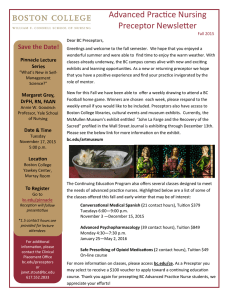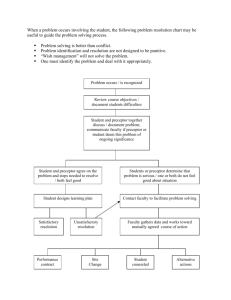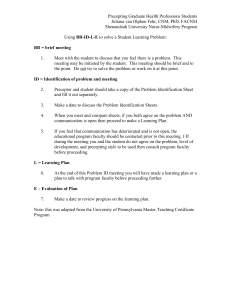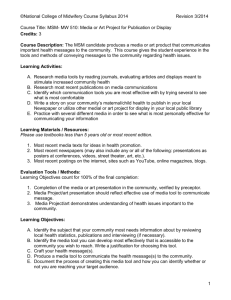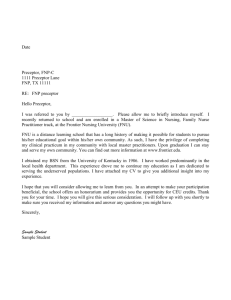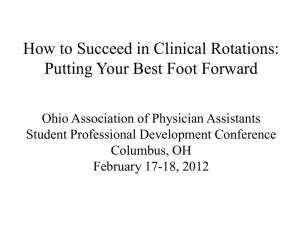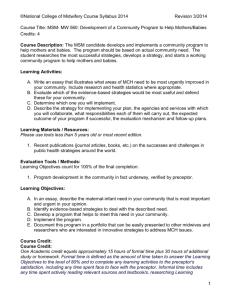Lead by Example Be a Preceptor
advertisement
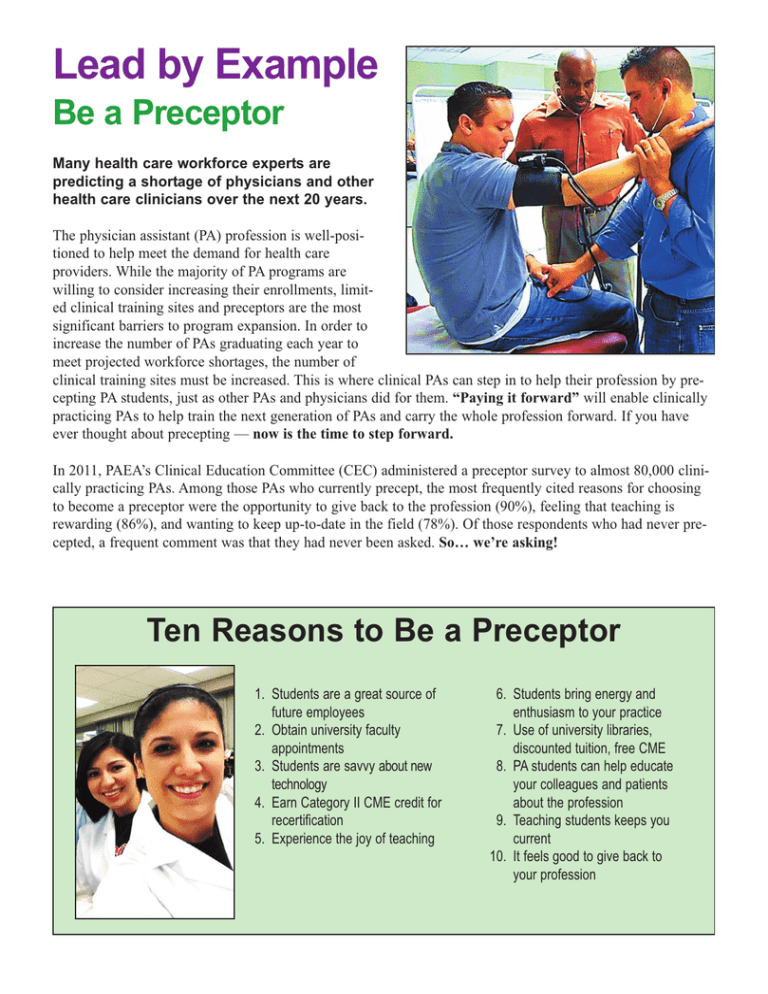
Lead by Example Be a Preceptor Many health care workforce experts are predicting a shortage of physicians and other health care clinicians over the next 20 years. The physician assistant (PA) profession is well-positioned to help meet the demand for health care providers. While the majority of PA programs are willing to consider increasing their enrollments, limited clinical training sites and preceptors are the most significant barriers to program expansion. In order to increase the number of PAs graduating each year to meet projected workforce shortages, the number of clinical training sites must be increased. This is where clinical PAs can step in to help their profession by precepting PA students, just as other PAs and physicians did for them. “Paying it forward” will enable clinically practicing PAs to help train the next generation of PAs and carry the whole profession forward. If you have ever thought about precepting — now is the time to step forward. In 2011, PAEA’s Clinical Education Committee (CEC) administered a preceptor survey to almost 80,000 clinically practicing PAs. Among those PAs who currently precept, the most frequently cited reasons for choosing to become a preceptor were the opportunity to give back to the profession (90%), feeling that teaching is rewarding (86%), and wanting to keep up-to-date in the field (78%). Of those respondents who had never precepted, a frequent comment was that they had never been asked. So… we’re asking! Ten Reasons to Be a Preceptor 1. Students are a great source of future employees 2. Obtain university faculty appointments 3. Students are savvy about new technology 4. Earn Category II CME credit for recertification 5. Experience the joy of teaching 6. Students bring energy and enthusiasm to your practice 7. Use of university libraries, discounted tuition, free CME 8. PA students can help educate your colleagues and patients about the profession 9. Teaching students keeps you current 10. It feels good to give back to your profession Why precept a student? Students bring many wonderful assets to a practice: energy, enthusiasm, technological expertise, and new ideas. They can help educate and enlighten practices and patients about the PA profession. And perhaps most valuable of all, students are a tremendous source of potential new employees; more than onethird of PAs find their first job through clinical rotations. During the clinical rotation, as a preceptor, you can test their ability to learn new skills and determine whether the student is a good fit for your practice. How much time will it take out of my day? Good teaching and supervision do take time. However, PA students can often add productive time to the preceptor’s day overall. The student can greet the patient and complete the history and physical examination while the preceptor is seeing other patients or taking care of administrative tasks. The PA profession embraces the team approach to the practice of medicine, so PA students can also work with and learn from other clinicians in the practice. Will it mean more paperwork for me? Many sites do require documentation such as evidence of HIPAA training, background checks, and immunization status. However, the PA program facilitates completion of the required institutional paperwork, develops the affiliation agreement with the site, and schedules the students. The number of students you will precept over a given year and the duration of the affiliation agreement are negotiated between the PA program and the site. No special certification is required to precept a student. Liability for the student lies with the PA program. What tangible benefits are there to precepting? With a few exceptions, PA programs do not offer financial compensation to precept PA students. However, programs do offer many other incentives for preceptors, including: An adjunct faculty appointment (an excellent resume addition) Free or reduced-cost CME courses Free or reduced-cost board review courses Faculty development training Use of the university library system and other resources Tuition vouchers Certificate or recognition If you are a practicing PA who is interested in serving as a preceptor for PA students, visit the PAEA website for an interactive map that provides contact information for all programs by state: www.PAEAonline.org/programmap How can I learn more? The Physician Assistant Education Association (PAEA) website has a special section dedicated to precepting at www.PAEAonline.org/preceptor.html. It includes a variety of resources on clinical teaching and other aspects of precepting. PAEA also offers the Preceptor Orientation Handbook: Tips, Tools, and Guidance for Physician Assistant Preceptors, a valuable resource for clinical coordinators and preceptors. For more information about PA education and PA educational programs, please contact Michel Statler at mstatler@PAEAonline.org; (703) 548-5538, ext. 310. For more information about the PA profession, including how to hire a PA, contact the American Academy of Physician Assistants at aapa@aapa.org; (703) 836-2272.
